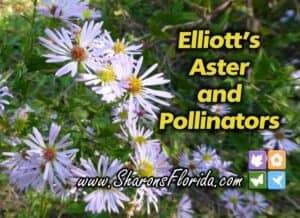Symphyotrichum elliottii
(Elliott's Aster)
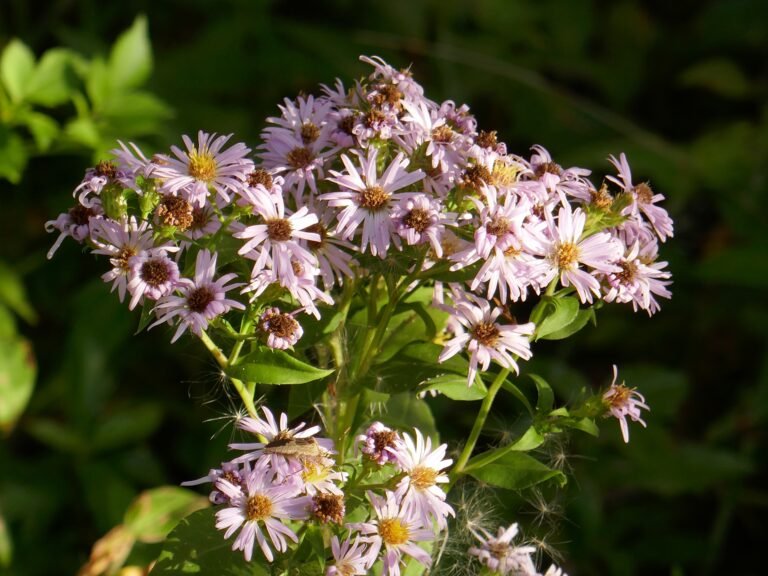
Common Names, Latin Name, and Family
Some of its other common names are southern swamp aster, and purple marsh aster.
Its Latin name is Symphyotrichum elliottii.
It is found in the Asteraceae, aster, family.
Form
A perennial wildflower that grows to a height of 3 feet and spreads by underground runners.
Leaves
Elliott’s aster leaves are alternate, oblanceolate with toothed margins.
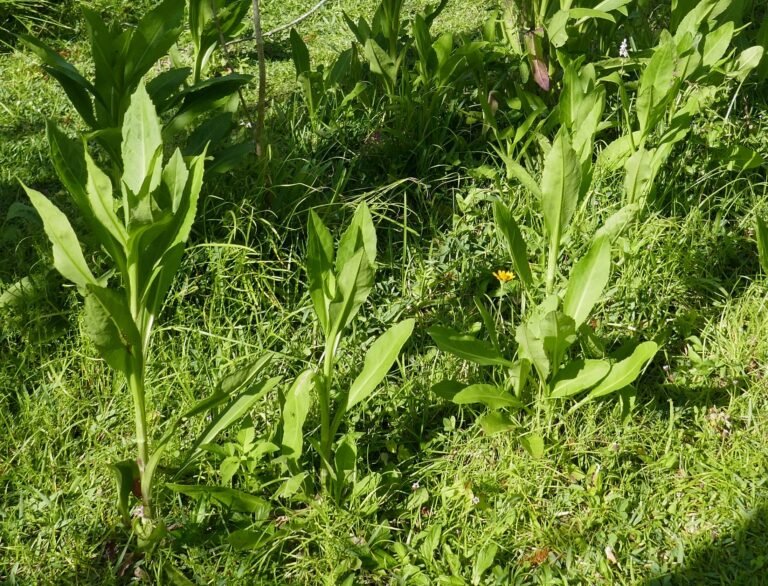
Flowers
Elliott’s aster produces beautiful purple flowers that appear in late summer, fall, and winter.
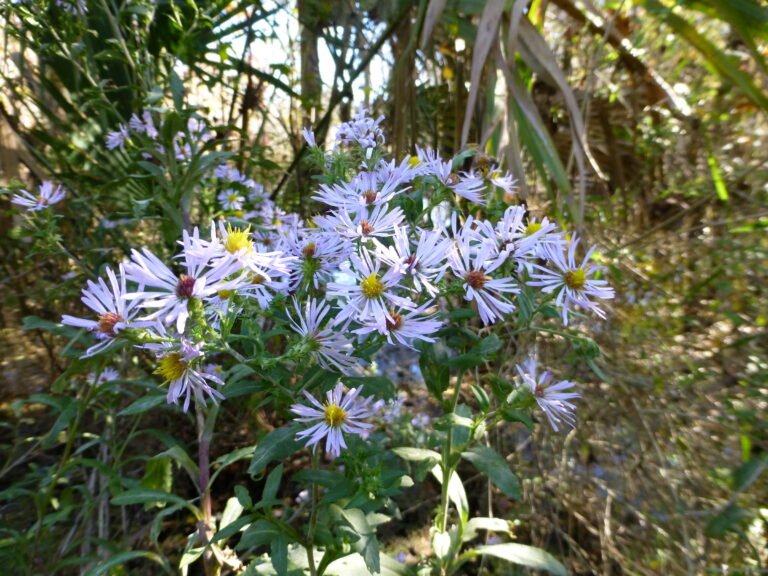
Fruit / Seeds
Once the flowers are pollinated the seeds begin to develop.
They have a short pappus, the fluffy part attached to the end of the seeds, that allows the seed to be carried away by the wind.
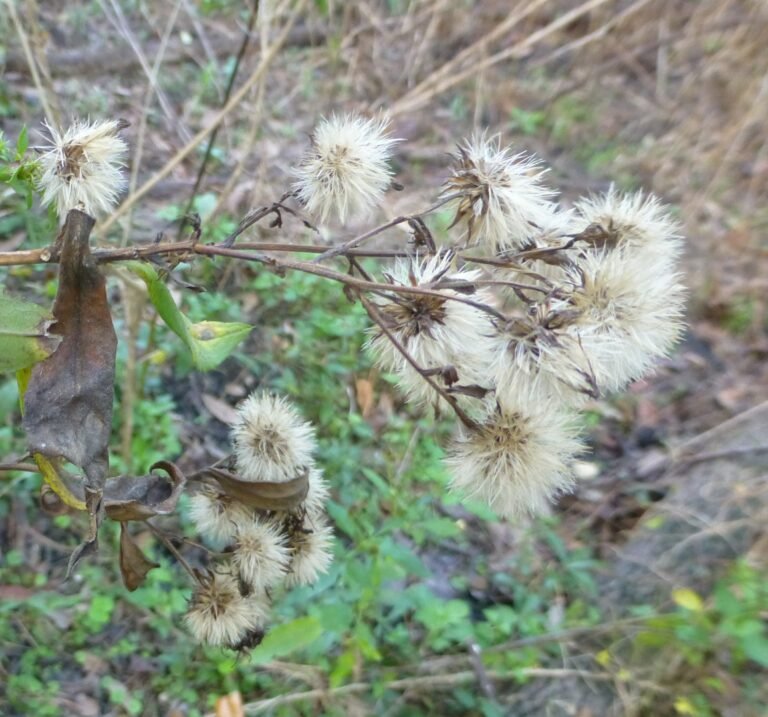
Habitat
It occurs naturally on pond margins, wet ditches, wetlands and low areas with constant moisture.
Native Range
Elliott’s aster is native to AL, FL, GA, LA, MS, NC, SC, and WA.
In Florida is is found naturally occurring throughout most of the state.
Landscape Use
It the home landscape it grows in part shade to full sun with moist to wet soils.
It is best planted in a moist or wet problem area where it can be allowed to grow naturally. If planted in such an area it will be a zero maintenance wildflower.
It is not suited for flower beds because it grows aggressively by underground runners and would need constant maintenance to remove them.
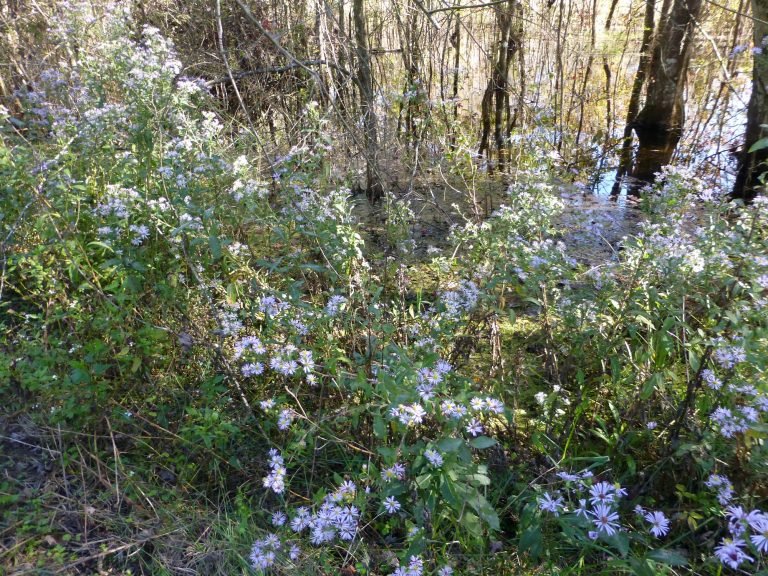
Wildlife Use
Bees and butterflies use the flowers as a nectar source.
Insect eating songbirds frequently hang around this aster in search of their next insect meal.
Propagation
Aster seeds need cold stratification. They can be planted to weather the seasons naturally (by direct sowing or having pots outside from fall to spring) or put in the refrigerator for 90 days.
Aster seeds need light to germinate so do not cover with soil but rather press firmly into the soil surface. Water from beneath so as not to disturb them. Keep moist and warm.
I have Florida ecotype seeds for Elliott’s aster here at my Ebay Store.
This wildflower transplants very easily. It can be pulled up and put into pots or moved to other areas of your green space. It is best to remove most of the upper stalk including any flowers or seed heads so the plant can focus on its roots to recover. Keep it moist until you see signs of new growth.

